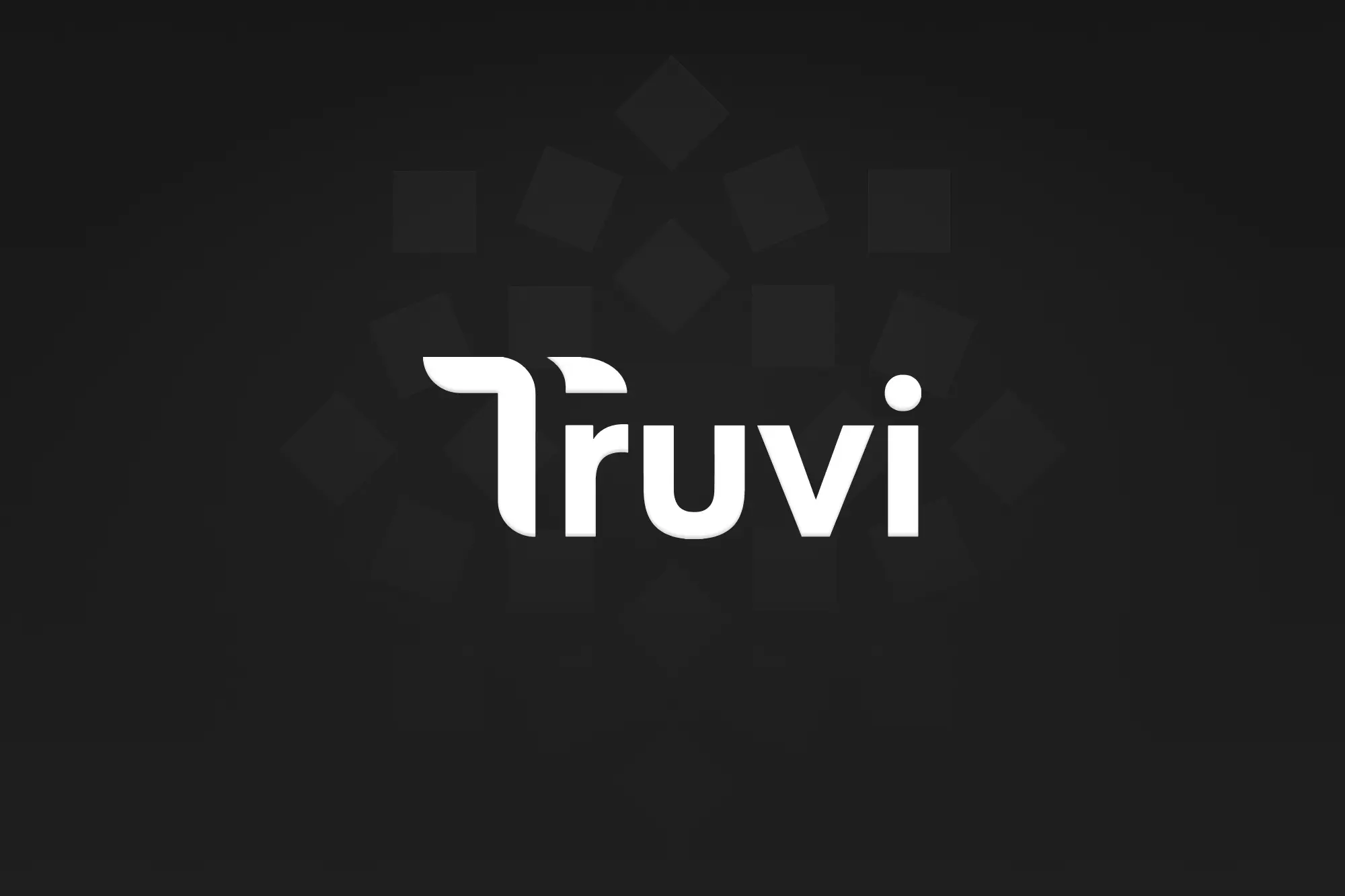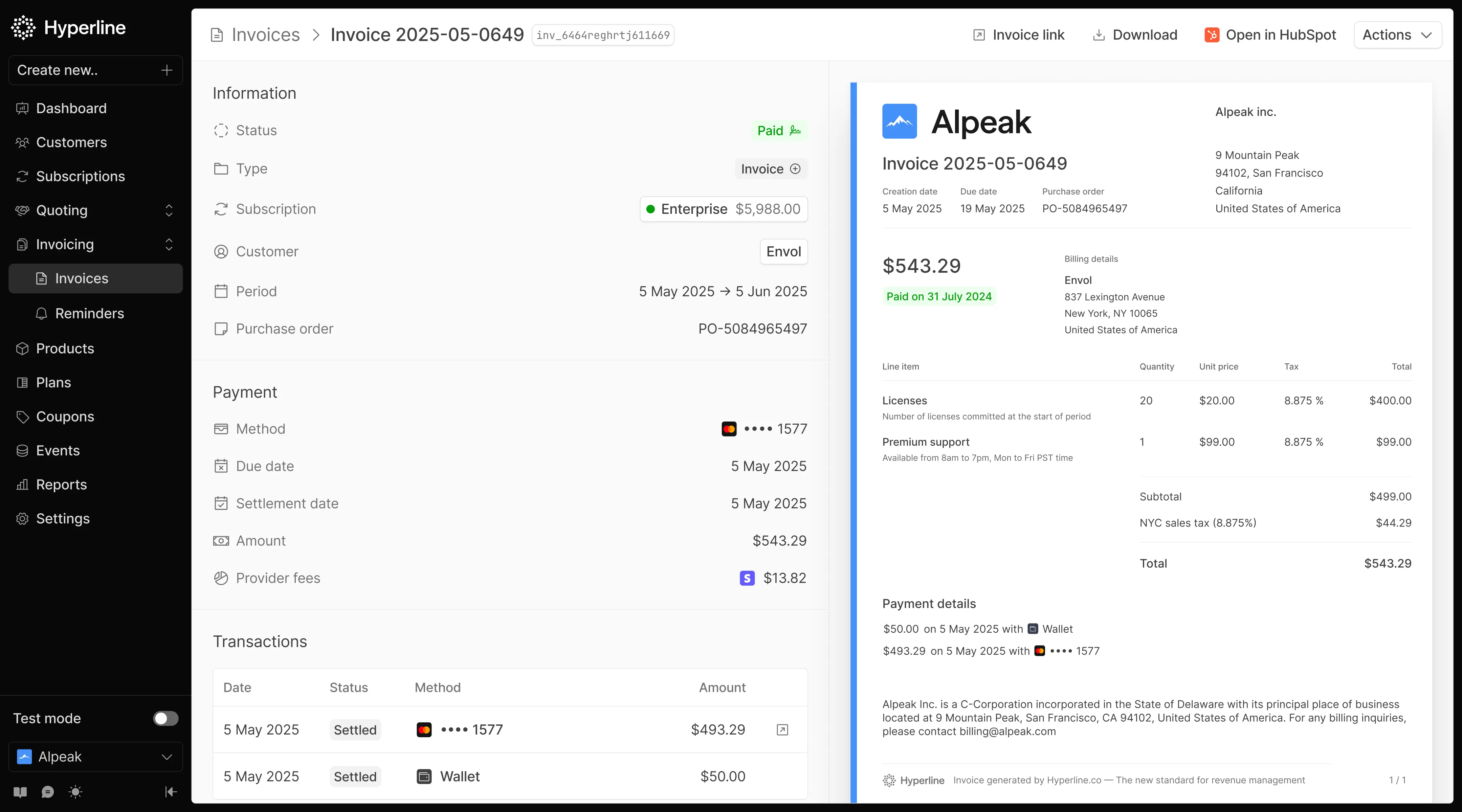
Sales operations
How Praiz uses Hyperline to run billing without engineering
Case study

Truvi, a leader in trust and protection for the short-term rental industry, transformed its finance operations with Hyperline. Facing growing volume and complexity, the team automated its entire billing process and gained real-time visibility into performance. Today, Truvi’s finance function runs on data — faster, smarter, and ready to scale with the business.

Truvi (formerly Superhog) provides property managers and hosts with tools for guest screening, identity verification, and damage protection. By removing risk from every booking, Truvi helps operators deliver safe, transparent, and trustworthy rental experiences worldwide.
As Truvi prepared to shift to a self-serve, product-led model, its manual billing process couldn’t keep up. The finance team was managing over 1,200 invoices each month, delaying close cycles and limiting real-time insights. Billing had become a bottleneck for growth and efficiency.
Truvi partnered with Hyperline to automate billing end-to-end and bring real-time visibility to every transaction. With a unified billing stack and automated workflows, finance now operates with greater accuracy, speed, and control — fully supporting the company’s high-volume, self-serve model.
Truvi runs on a flexible per-booking model built around customizable programs — sets of services defined by each operator. Their usage-based pricing (no platform fees or subscriptions) allows users to pay only when they process a booking, choosing from screening-only to full damage protection.
With Hyperline, Truvi reduced its month-end close from 12 weeks to just 4 days, while scaling to thousands of customers. The finance team now works with real-time data, faster reporting, and complete confidence — powering a truly data-driven finance function.
Truvi (formerly Superhog) is redefining trust and protection in the short-term rental industry. Founded with a mission to remove risk from every booking, Truvi provides property managers and hosts with a complete platform for guest screening, identity verification, and damage protection.
Today, Truvi partners with leading operators and property management systems worldwide, helping hosts and guests enjoy safer, more reliable stays. By combining technology, automation, and financial protection, Truvi eliminates uncertainty from the booking process — so operators can focus on delivering great guest experiences while Truvi handles trust, transparency, and risk.
Truvi keeps pricing simple with a per-booking model, built around customizable programs — sets of services defined by each operator. No platform fees, no subscriptions: users only pay when they process a booking, with coverage options ranging from screening-only to full screening plus damage protection. Protection tiers scale from everyday incidents to high-value claims, allowing managers to adapt coverage by property or booking type.
This model naturally scales with the business: costs stay predictable, tied to revenue, while every reservation is backed by the right level of protection.
By getting Hyperline live by the end of 2024, Truvi laid the foundation for its strategic GTM shift in H2 2025. Truvi transitioned toward a self-serve, product-led motion, allowing users to sign up directly on the platform. This shift opened major growth opportunities — but also introduced new billing challenges, as revenue collection now needed to match this new, high-volume model.
The GTM shift promised strong growth for Truvi — but also surfaced a critical scalability issue: billing. Until then, the team managed pricing and invoicing manually, sending nearly 1,200 invoices a month. The process was slow, error-prone, and unsustainable for the finance team, who spent entire weeks handling invoices and chasing payments.
When Nathan joined Truvi (still operating as Superhog at the time) as Financial Controller in 2024, he immediately saw the limits of the setup:
“It was barely holding together — and I kept thinking, what if tomorrow we get 1,000 new signups in a single day? There’s no way we’d handle that load.”
On top of that, Truvi’s usage-based model brought additional complexity and limited visibility for customers, who couldn’t easily track their consumption in real time. That lack of transparency quickly translated into lost trust and frustration.
From day one, Nathan made billing transformation a top priority:
“We needed a scalable process. Billing had become a blocker to growth.”
With so much time spent on manual billing, month-end close was consistently delayed — sometimes by up to three weeks. This made it impossible for the finance team to get a real-time view of the business or make data-driven decisions.
“Billing was taking so long that it pushed the close into the next month. Finance should be an automated, efficient process that gives you instant access to numbers — otherwise, you’re making decisions blind.”
Nathan knew the business needed a scalable, transparent billing process to support growth and restore trust — both internally and with customers.
By mid-2024, billing had become part of every conversation at Truvi. Everyone understood that the current setup couldn’t keep up with the company’s pace, and fixing it was a top priority.
Nathan joined in June 2024 with a clear goal: build a billing stack ready to scale to thousands of customers. He benchmarked multiple solutions, including Hyperline and Maxio.
“I’d used Maxio before, but Hyperline just felt so much more modern. I want my finance team to work with the newest tools on the market.”
After running technical tests to validate their use cases — especially on the usage side — both the finance and tech teams were impressed by Hyperline’s expertise and responsiveness throughout the process.
“You can’t underestimate the human side in a project this complex and high-staked. Every touchpoint with the Hyperline team was super helpful.”
What sealed the decision was Hyperline’s native integration with Airwallex, enabling Truvi to build a robust payments infrastructure that scales seamlessly with their business.
In fall 2024, Truvi kicked off its Hyperline onboarding — a joint effort between the finance team and engineering to ensure a seamless in-app experience for self-serve customers. The process was supported end-to-end by Hyperline’s team, helping Truvi get up and running fast and without friction.
Today, Hyperline powers a simple, scalable billing system at Truvi.
“The best thing about Hyperline is that we’re no longer afraid to scale — we know it’ll just work,” says Nathan.
Beyond scalability, Hyperline helps Truvi accelerate its time-to-market. With a flexible product catalog, the finance team can now launch and iterate on new pricing models in just a few clicks — no engineering needed.
Since adopting Hyperline, Truvi has already launched four new self-serve products, each with its own subscription tiers and pricing programs. This flexibility gives the team deeper visibility into customer behaviour and performance data — and enables finance to take on a more strategic role.
“We can now recommend the right program to the right persona, thanks to the data we easily collect and this is showing great insights into our market.”
Hyperline completely transformed Truvi’s revenue capture process —
“It’s not even a problem anymore!” Nathan laughs.
Hyperline has become a source of truth for the finance team, drastically improving speed and accuracy at month-end. With a unified, automated billing stack, closing the books is now faster and smoother than ever.
“The biggest impact has been on closing. What used to take 12 weeks with 8 people now takes just 4 days with 4 people. The difference in productivity is huge.”
Hyperline also helped Truvi elevate the end-user experience. With a modern billing platform designed for usage-based pricing at scale, customers can now access a dedicated billing portal to:
Offering real-time usage visibility solved one of Truvi’s biggest challenges. Before Hyperline, customers had no way to see how much they were consuming or what they would be charged, leading to confusion and frustration. Now, they can monitor usage instantly, understand their spend, and plan ahead with confidence.
This new level of transparency brings predictability and trust — turning what used to be a source of friction into a core part of Truvi’s customer experience.
